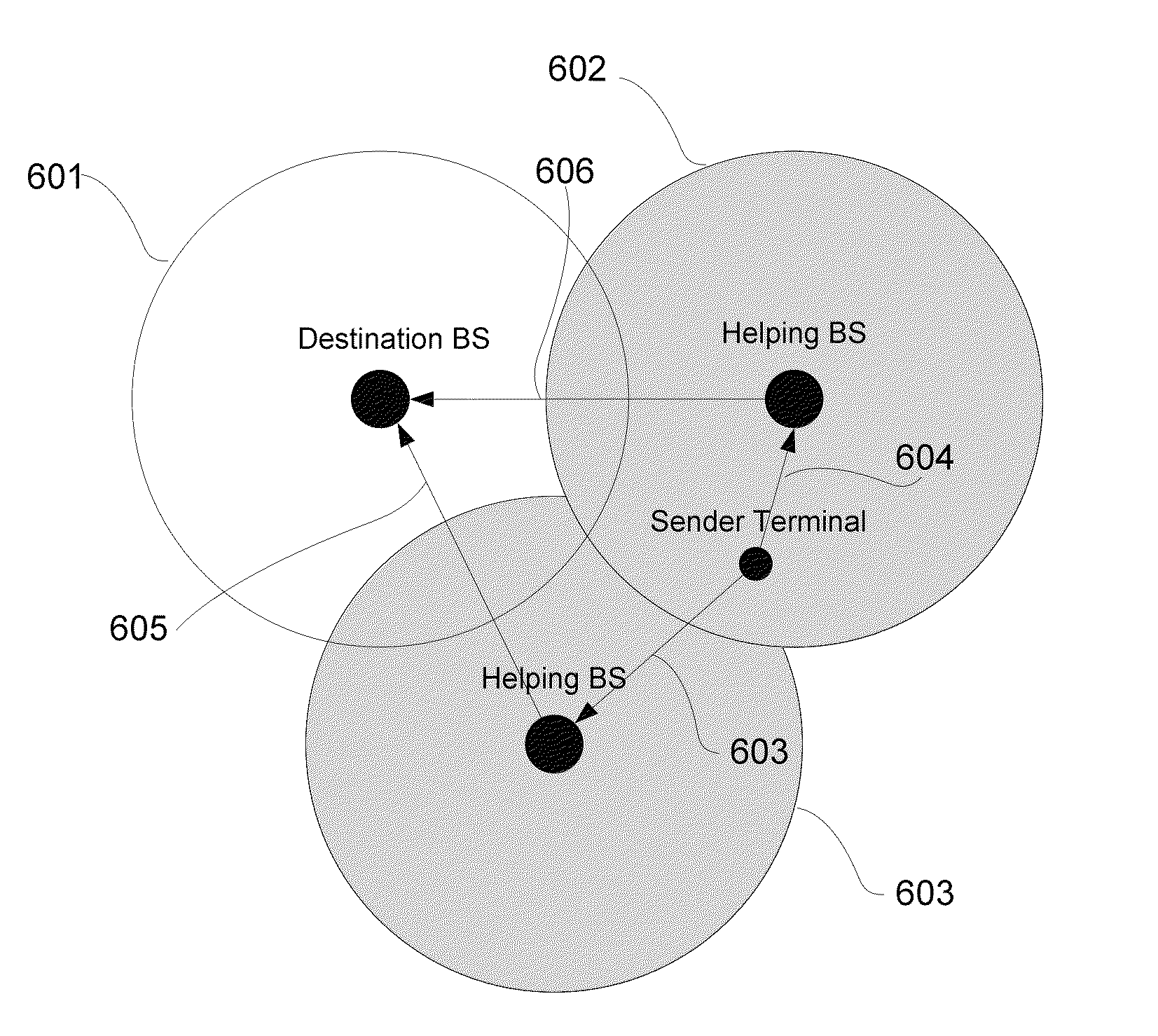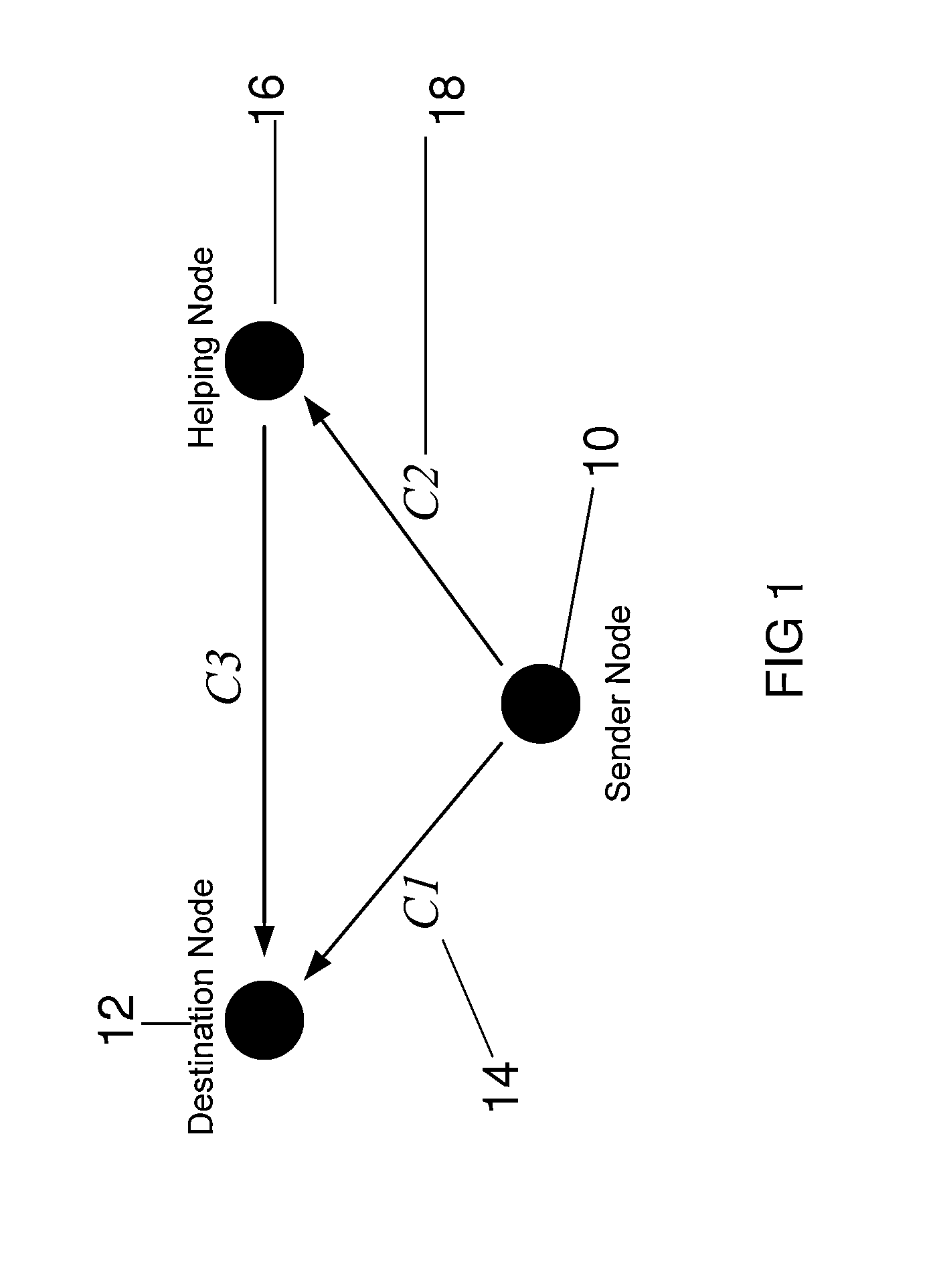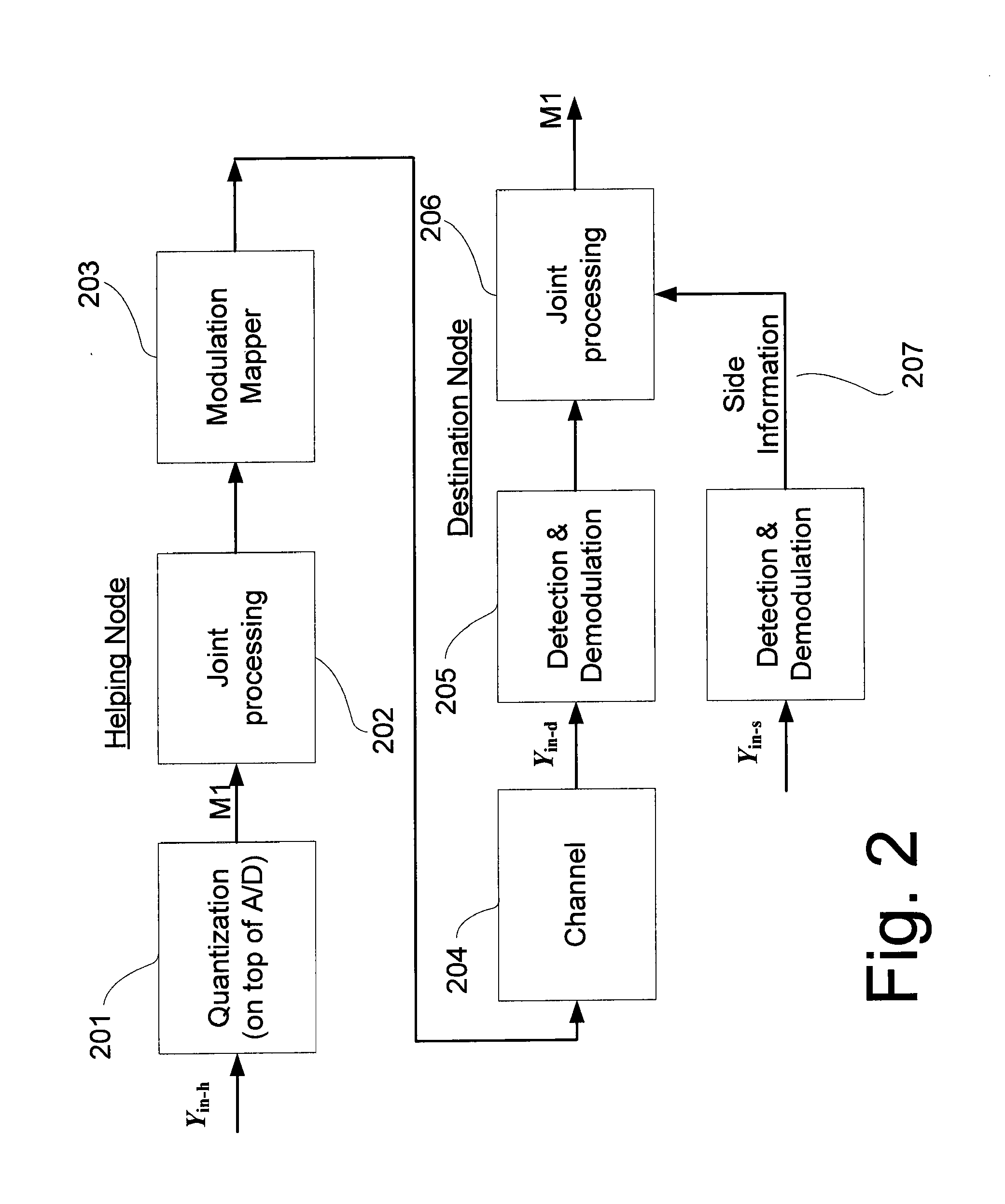Wireless network architecture and method for base station utilization
a wireless network and base station technology, applied in the field of wireless network architecture and base station utilization, can solve the problems of affecting the efficiency of base stations, and affecting the utilization rate of base stations, so as to achieve the effect of retaining small complexity and continuing utilization of macro diversity
- Summary
- Abstract
- Description
- Claims
- Application Information
AI Technical Summary
Benefits of technology
Problems solved by technology
Method used
Image
Examples
Embodiment Construction
[0122]The present embodiments make use of the principle that a mobile station is generally within range of more than one base station at any given time, and allows the different base stations or nodes, which may receive (send) the signal in any event, to process the signal as main and helper nodes.
[0123]In an embodiment a group of such nodes work together as a cluster with a master base station and slave base stations, all controllable together to best serve the mobile station.
[0124]Some embodiments are directed to methods and apparatus for efficient processing at destination and helping nodes of a wireless network, which will better utilize the network resources, whether wireless, fiber-optic or otherwise, by considering that the channel between destination and helping nodes is not a noiseless channel, and is susceptible to physical conditions, which in turn induce errors.
[0125]In accordance with the present teaching, a helping node may process the received signal by using a digita...
PUM
 Login to View More
Login to View More Abstract
Description
Claims
Application Information
 Login to View More
Login to View More - R&D
- Intellectual Property
- Life Sciences
- Materials
- Tech Scout
- Unparalleled Data Quality
- Higher Quality Content
- 60% Fewer Hallucinations
Browse by: Latest US Patents, China's latest patents, Technical Efficacy Thesaurus, Application Domain, Technology Topic, Popular Technical Reports.
© 2025 PatSnap. All rights reserved.Legal|Privacy policy|Modern Slavery Act Transparency Statement|Sitemap|About US| Contact US: help@patsnap.com



